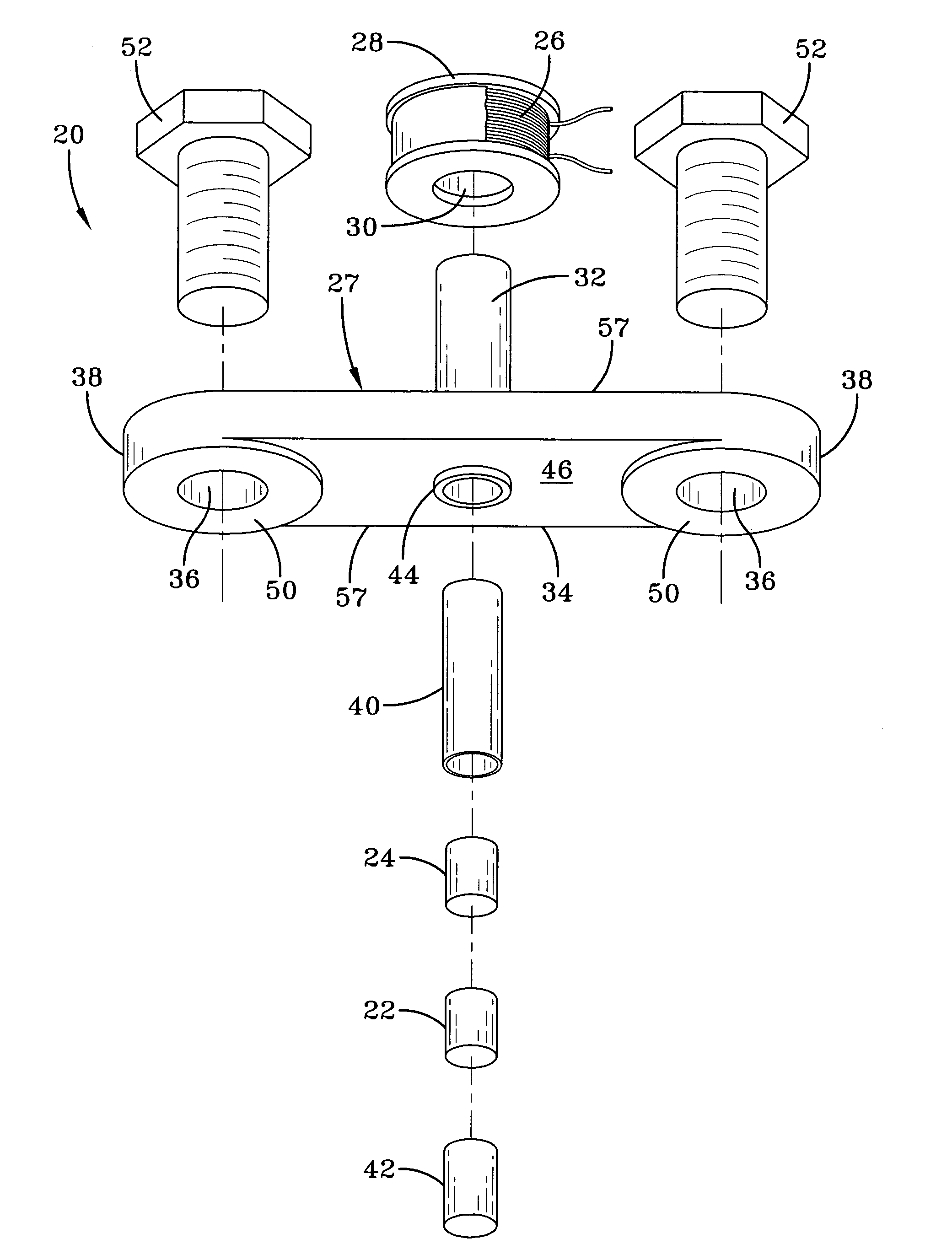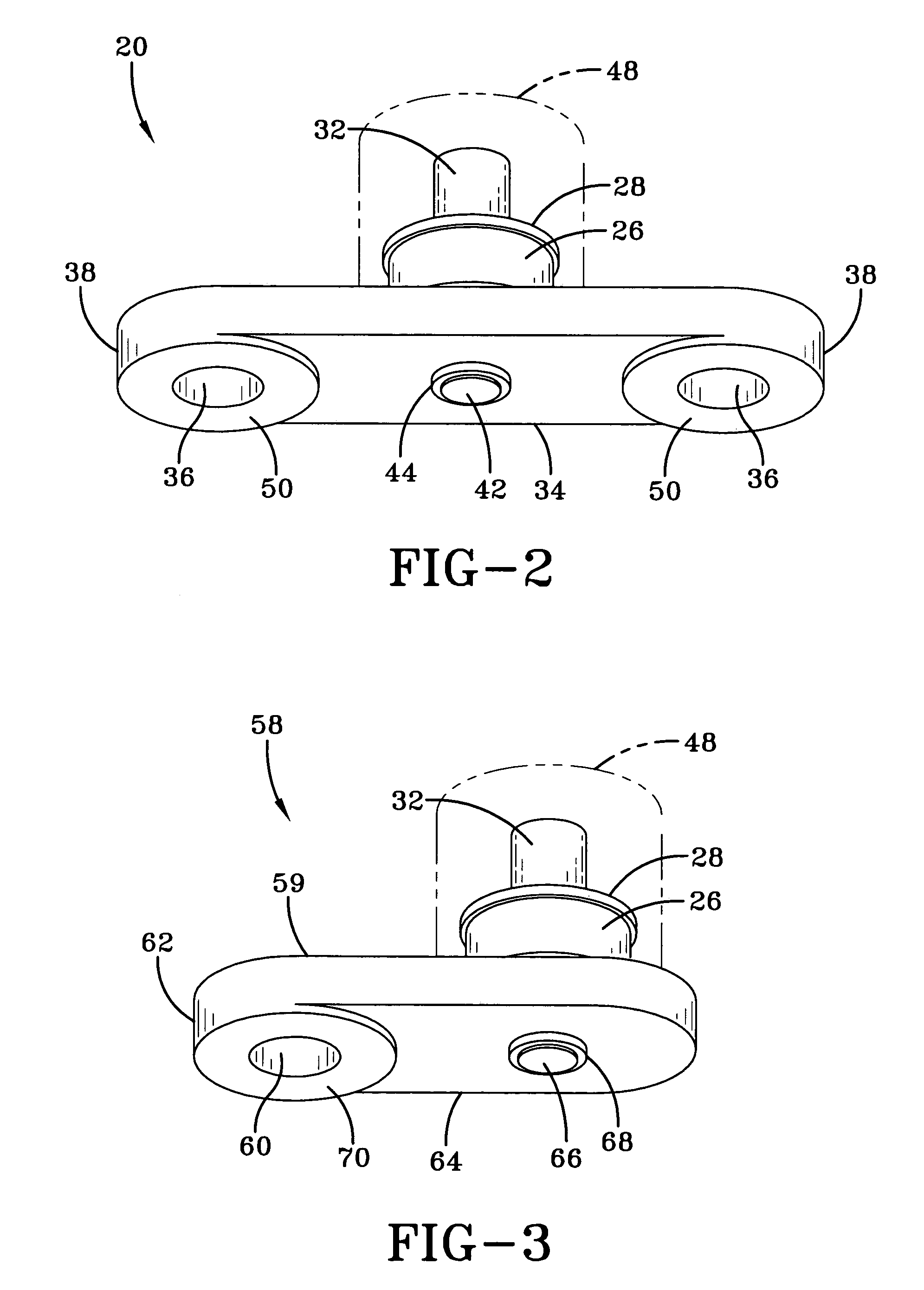Magnetostrictive stress wave sensor
a stress wave sensor and magnetic field technology, applied in the field of shock sensors, can solve the problems of reducing the value of vehicles, so as to achieve the effect of large voltage output and easy detection and digitization
- Summary
- Abstract
- Description
- Claims
- Application Information
AI Technical Summary
Benefits of technology
Problems solved by technology
Method used
Image
Examples
Embodiment Construction
[0014]Referring to FIGS. 1–4, wherein like numbers refer to similar parts, a crash sensor 20 is shown in FIG. 2. The crash sensor 20, as shown in FIG. 1, has three functional elements: a Terfenol-D (Tb0.3 Dy0.7 Fe1.92) sensing element 22, a biasing magnet 24, and a sensing coil 26 mounted on a housing 27. The housing 27 has a cylindrical portion 32 that projects from a beam 34. The shock sensor 20 incorporates a bobbin 28 on which the sensing coil 26 is wound. The bobbin 28 has a central aperture 30 that fits over the cylindrical housing portion 32. The sensing coil 26 can have for example, around 1,000 turns of thirty-six gauge wire. The beam 34 extends on either side of the cylindrical housing portion 32 and has two apertures 36, one formed in each end 38 of the beam. As shown in FIG. 1, a sleeve 40 is loaded with a cylindrical biasing magnet 24, a cylindrical Terfenol-D sensing element 22 and a cylindrical spacing element 42 that protrudes from the sleeve 40. The biasing magnet 2...
PUM
| Property | Measurement | Unit |
|---|---|---|
| giant magnetostrictive | aaaaa | aaaaa |
| magnetic field | aaaaa | aaaaa |
| strength | aaaaa | aaaaa |
Abstract
Description
Claims
Application Information
 Login to View More
Login to View More - R&D
- Intellectual Property
- Life Sciences
- Materials
- Tech Scout
- Unparalleled Data Quality
- Higher Quality Content
- 60% Fewer Hallucinations
Browse by: Latest US Patents, China's latest patents, Technical Efficacy Thesaurus, Application Domain, Technology Topic, Popular Technical Reports.
© 2025 PatSnap. All rights reserved.Legal|Privacy policy|Modern Slavery Act Transparency Statement|Sitemap|About US| Contact US: help@patsnap.com



